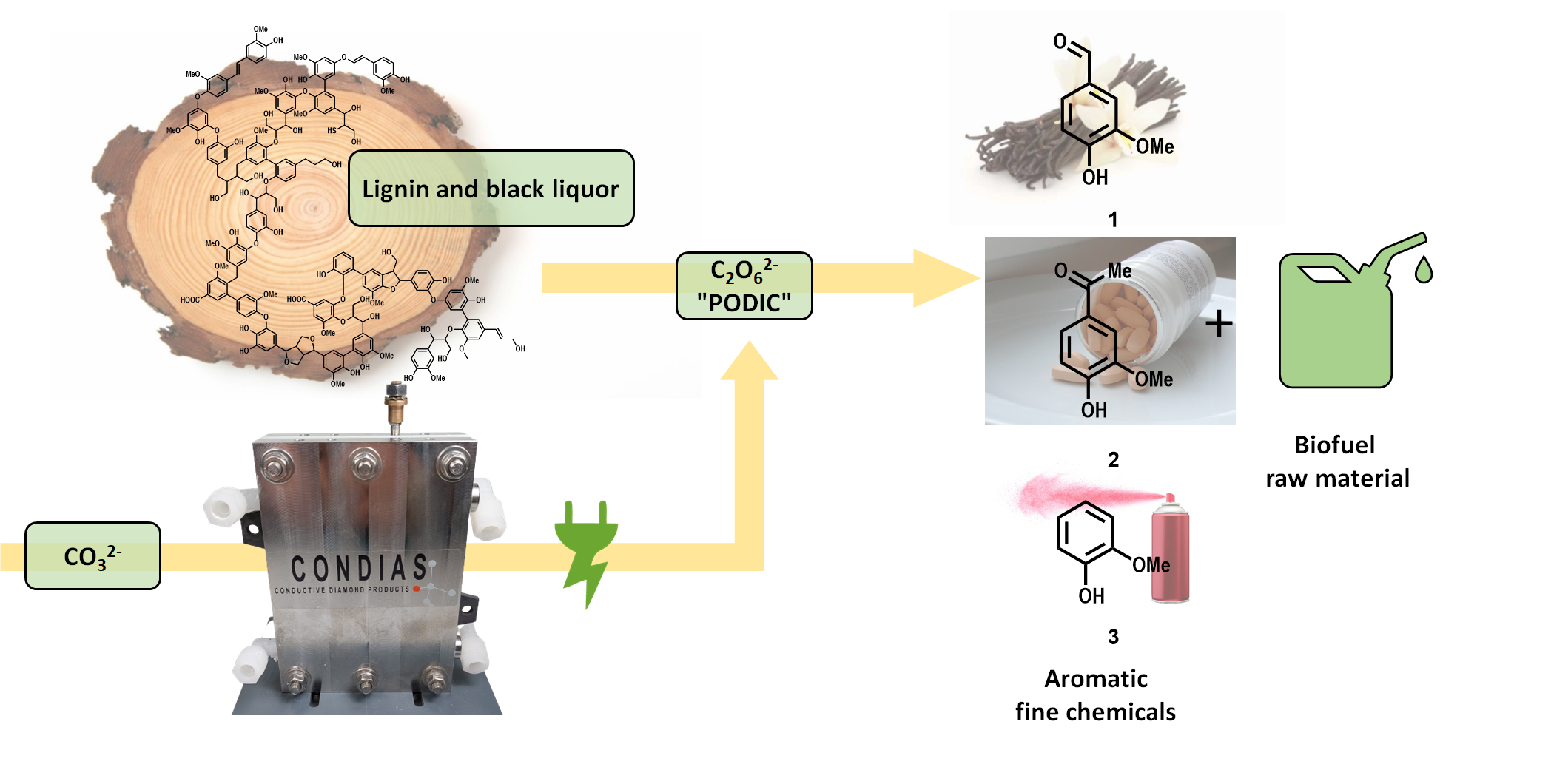Besides cellulose and hemicellulose, lignin represents a major part of plant biomass.[1] Due to the large waste stream originating from pulping processes, Kraft lignin and black liquor, to name two examples, are of technical interest. Because of the polyphenolic structure, the biopolymer lignin is qualified as a potential renewable feedstock to produce bio-based aromatic fine chemicals such as vanillin (1), acetovanillone (2) and guaiacol (3). Furthermore, lignin as well as black liquor, a by-product from the Kraft process, could also be suitable as a potential sustainable feedstock for the production of biofuels.
We developed in the EBIO Project an electrochemically supported method for the highly selective degradation of Kraft lignin to water-soluble degradation products such as the fine chemicals vanillin (1), acetovanillone (2)and guaiacol (3), but also water-soluble polymer fragments that may function as feedstock for biofuels.Therefore, the electrochemically ex-situ generated high-performance oxidant peroxodicarbonate (PODIC) was employed.[2] PODIC is simply generated in a flow electrolysis cell from an aqueous carbonate solution, which makes it an especially sustained oxidizing agent. We are using a boron-doped diamond (BDD) anode in a flow cell designed by condias.[3] In more advanced electrolysis cells PODIC concentration can be strongly enhanced.[4] Addition of the high-performance oxidizer “PODIC” to a solution of lignin, or even black liquor itself, gives an oxidized polymer that subsequently undergoes thermally induced depolymerization. Pressures greater than 10 bar are generated in an autoclave. After successful thermal treatment, a solution of water-soluble degradation products is obtained, which can be further processed. In summary, the developed method relying on electrolyzed carbonate as sustainable oxidizing agent allows for selective degradation of Kraft lignin to vanillin and acetovanillone as well as water-soluble degradation products, which could be implemented into biofuels.
[1] M. Zirbes, L. L. Quadri, M. Breiner, A. Stenglein, A. Bomm, W. Schade, S. R. Waldvogel, ACS Sustainable Chem. Eng. 2020, 8, 7300–7307.
[2] S. Waldvogel, M. Zirbes, R. Neuber, T. Matthée, Process for the oxidation of carbon-containing organic compounds with electrochemically generated oxidizing agents and arrangement for carrying out the process, PCT Int. Appl. 2020, WO 2020099350 A1 20200522.
[3] C. P. Chardon, T. Matthée, R. Neuber, M. Fryda, C. Comninellis, ChemistrySelect 2017, 2, 1037–1040. [4] A.-K. Seitz, P. Kohlpaintner, T. van Lingen, M. Dyga, F. Sprang, M. Zirbes, S. R. Waldvogel, L. J. Gooßen, Concentrated Aqueous Peroxodicarbonate: Efficient Electrosyn- thesis and Use as Oxidizer in Epoxidations, S-, and N-Oxidations, Angew. Chem. Int. Ed., 2022, accepted.

